#Welton Becket and Associates
Photo

1963 postcard from The Whitehall in Houston, Texas, designed by Welton Becket and Associates. It’s closed, reopened, and reopened again over the years.
(Historic Hotels of America)
125 notes
·
View notes
Photo
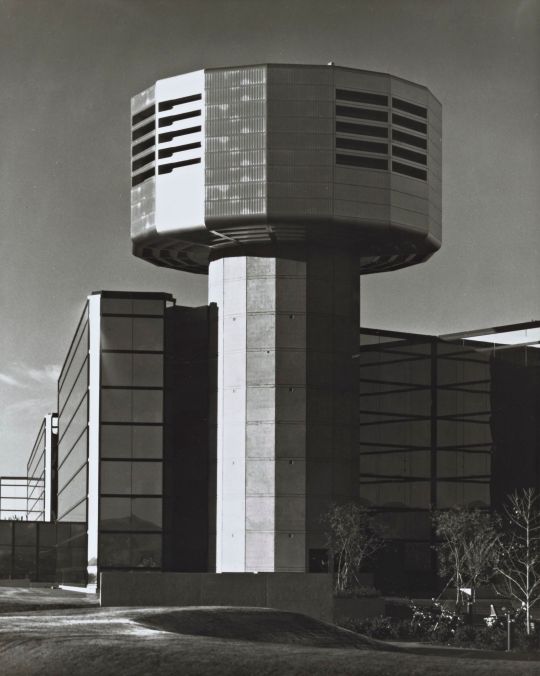
Fluor Corporation (1976-81) in Irvine, CA, USA, by Welton Becket and Associates. Photo by Julius Shulman.
162 notes
·
View notes
Text
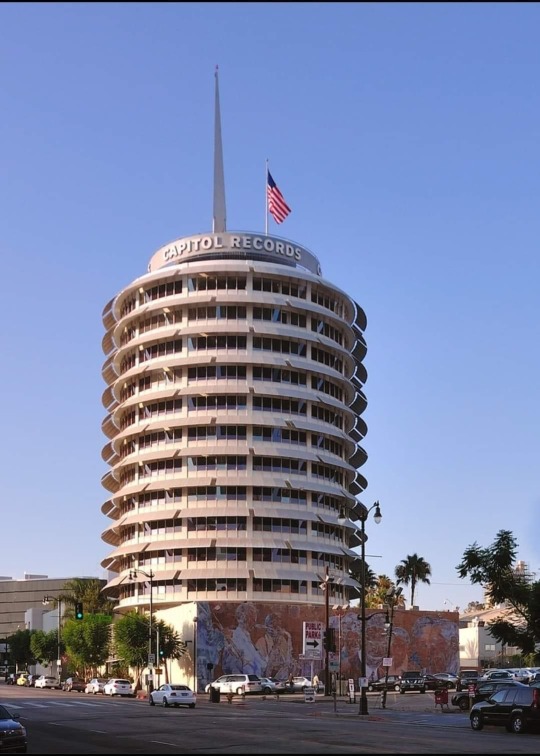
This Month In Music History April 1956
The Capitol Records Building, also known as the Capitol Records Tower. Designed by Louis Naidorf of Welton Becket Associates, it is one of the LA's landmarks. Construction began soon after British music company EMI acquired Capitol Records in 1955, and was completed in April 1956.
The building is known as "The House That Nat Built" due to the vast numbers of records and amounts of merchandise Nat King Cole sold for the company.
Photo by Flickr user: Christian Dionne
1 note
·
View note
Text
Jupiter Chevrolet, L.P. in Garland, TX
Many people struggle in finding reliable auto body shop service providers at present. At Jupiter Chevrolet, L.P., they understand that it is necessary to provide excellent used car dealership services these days. Fortunately, Jupiter Chevrolet exists as it is your one-stop shop in Garland, Texas, for everything from tires to body repair. In addition, there’s no service too big or too small for them. They’ll treat any and every job with the same level of care. Besides, their experts do their very best to ensure that the work gets done right the first time and that you get the best deal possible in the process. Read more here.
Garland, TX
There are many ways to study the economic development of the Garland, TX location. One of the best ways is to discuss the past economic progress in the city. Besides, those who are planning to move to Garland, TX are aware about this. Let’s talk about its economic history. In the early 1980s, Garland had one of the lowest poverty rates of cities in the country. In 1990, it had a population of 180,650 and 2,227 businesses, making it Dallas County's second-largest city and the 10th-largest in the state. At present, Garland had a variety of industries, including electronics, steel fabrication, oilfield equipment, aluminum die casting, hat manufacture, dairy products, and food processors.
Reunion Tower
Are you planning to visit a famous tower at present? How about Reunion Tower? Basically, it is a baseball stadium located in Garland, TX. It is a 561 ft. observation tower in Dallas, Texas and one of the city's most recognizable landmarks. Besides, it is located at 300 Reunion Boulevard in the Reunion district of downtown Dallas. The tower is part of the Hyatt Regency Hotel complex and is the city's 15th tallest building. In addition, it is a freestanding structure until the construction of an addition to the Hyatt Regency Dallas in 1998. Lastly, architectural firm of Rochester’s Xerox Tower, Welton Becket & Associates, designed the tower.
Where to find holiday festivals, tree lightings and more in Dallas-Fort Worth
Are you interested to know the exciting news reports in Garland, TX? Let’s discuss the latest report in the city about holiday festivals and tree lighting events. It has something to do with Christmas, too. As reported, you can try adding one of these hometown festivals to your wish list. All across Dallas-Fort Worth, Christmas trees and menorahs will be lit, music will play, carolers will sing, and Christmas drones will light the night sky. Additionally, a roundup of some of those fests and lightings are posted online. For instance, you can check individual websites for safety policies and other details.
Link to Map
Driving Direction
Reunion Tower
300 Reunion Blvd E, Dallas, TX 75207, United States
Get on TX-366 Spur E from Reunion Blvd W and S Riverfront Blvd
5 min (1.1 mi)
Take US-75 N and TX-12 Loop E/E NW Hwy/Northwest Hwy to TX-244Spur E
13 min (9.8 mi)
Follow TX-244Spur E and Jupiter Rd to your destination in Garland
9 min (3.3 mi)
Jupiter Chevrolet, L.P.
11611 Lyndon B Johnson Fwy,
Garland, TX 75041
0 notes
Photo
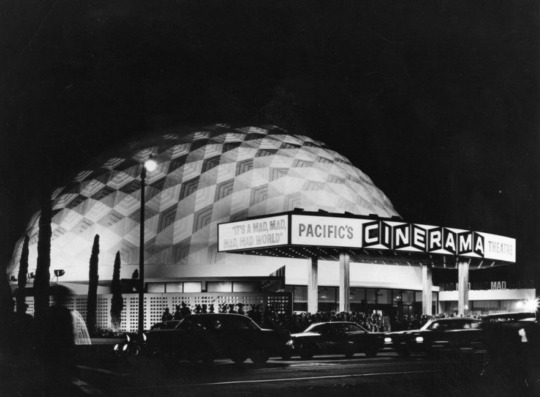
Nov 7, 1963: Designed by Welton Becket & Associates, the Cinerama Dome opened #OTD with the film “It’s a Mad, Mad, Mad, Mad World.” This 1963 photo comes from the Los Angeles Public Library’s Security Pacific National Bank Collection.
1 note
·
View note
Text
Sheraton Dallas Hotel - Dallas, Texas
Sheraton Dallas Hotel – Dallas, Texas
hotel, skyscraper, convention center
History
The complex was originally designed by Welton Becket & Associates from Los Angeles for the Southland Life Insurance Company. When groundbreaking for the buildings took place in 1955 it was compared to Manhattan’s Rockefeller Center, as Southland Center was the first mixed-use project in downtown containing both hotel and office space.
Southland…
View On WordPress
0 notes
Photo

Welton Becket and Associates, One Tampa City Center, Under Construction, Tampa, Florida, 1981
#architecture#design#construction#under construction#tower#skyscraper#Welton Becket and Associates#One Tampa City Center#Tampa#Florida
74 notes
·
View notes
Photo


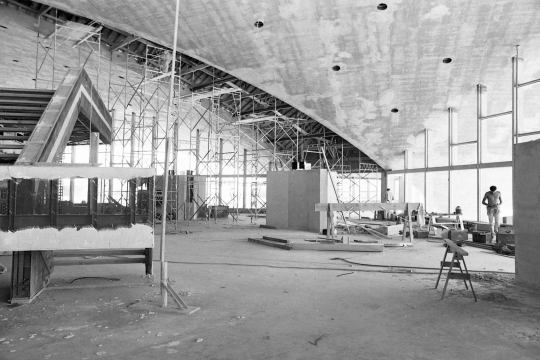


Construction of Terminal 1 at LAS Airport, c. 1963
The clam-shell rotunda for the A & B gates encloses more than two acres under a roof with no internal supports. Architects: Welton Becket Associates with John Replogle.
Alan Hess: “The structural engineer working with Welton Becket Assoc. was Richard Bradshaw, a brilliant expert in thin shell concrete construction; that soaring roof is as thin as four inches. It is in fact a more authentic expression of modern thin shell structure than the TWA terminal by Eero Saarinen, who designed that building as elegant sculpture, and then handed it to his engineer to figure out how to build it using more conventional means. Bradshaw began with the engineering principles of thin shell, and then expressed those elegant principles as elegant forms. Both buildings were in the design process basically at the same time. The TWA building has definitely received more publicity but Las Vegas can be proud of this design.”
Welton MacDonald Becket: “Pierre Cabrol AIA at Welton Becket Associates was the designer.”
Photos: Las Vegas News Bureau
Airport’s Art Zone, LV Sun, 11/26/2007. Quote from Alan Hess on Vintage Las Vegas, Facebook.
98 notes
·
View notes
Photo

Sitting Area. House of former President Gerald Ford & his wife Betty Ford. Rancho Mirage, California. Designed by: Welton Becket & Associates in 1977. Restored by: Marmol Radziner Architecture. [626x845].
7 notes
·
View notes
Photo

Carlos Diniz: A History of Drawing the Future
Edward Cella
Carlos Diniz, born of Brazilian parents, spent most of his childhood in Los Angeles making art in almost every medium available to him. Drafted into military service at 18 years old in 1946, he was posted overseas in Venice, Italy, where he began to marry a fascination with architecture and city scenes to his love of drawing. Once his service was over, Diniz earned his B.A. in specialized design at Art Center College in Los Angeles in 1951, undertaking a self-education in architecture along the way. He then joined the Viennese architect Victor Gruen’s team developing promotional materials for Gruen’s large-scale, pioneering shopping center schemes. In 1957, Diniz opened his own architectural illustration firm, Carlos Diniz Associates Visual Communications, first in the Granada Building and later in Chapman Plaza.
One of the last to master the tradition of the hand-drawn building perspective, Diniz became nationally known over his four-decade-long professional career as an architectural delineator who could translate architects’ often very technical renderings of proposed buildings or entire new communities to a format easily understood by clients, developers, review agencies, and the public at large. Diniz called his work the “art of illusion,” and he innately understood how to articulate, even choreograph, how these yet-unbuilt projects would be perceived. Focusing on the birds-eye view and on spaces, vistas, and movement between structures, his professional practice traces the development of Southern California and beyond in the postwar era. He made every drawing accessible, using his skill to seduce its viewer into embracing the architect’s scheme.
Diniz’s early clients included the prominent architects Welton Becket and César Pelli, and he collaborated with Frank Gehry under Gruen. Over time, his practice expanded nationally with his work for the giant firms of Skidmore, Owings, and Merrill (SOM) in San Francisco and HOK in St. Louis. He also was integral in helping design Minoru Yamasaki’s World Trade Center in 1961 and the L.A. landmark Century Plaza Hotel in 1964. Diniz worked on thousands of projects around the globe for some of the world’s best architects. Thanks to a gift from his family in 2016, the vast archive of work by Carlos Diniz Associates became part of the Architecture and Design Collection held by UC Santa Barbara’s Art, Design & Architecture Museum.
This archive gains a particular meaning when considered in a volume, like this one, dedicated to reconsidering the civic memory of Los Angeles. Diniz’s work is a reminder of just how many approaches to imagining the future (architectural, cultural, or otherwise) were pioneered or given room to roam in Southern California. (His had a painterly, hand-drawn aspect that helped leaven the futurism with craft and a particular, recognizable personal style.) That history of speculation in Los Angeles, even that anxiousness to move into the future, is a legacy worth understanding and preserving just as any significant work of architecture is.
2 notes
·
View notes
Text
Sunset Boulevard: More Than Just The Strip

Several galleries in our hollywoodphotographs.com collection depict sites located on Sunset Boulevard and for good reason: the street tells so many aspects of the Hollywood story - associations with the early film industry, entertainment venues, and key places where residents worked, shopped, and worshipped. Twenty-two miles in length, the winding and heavily trafficked thoroughfare includes portions of a centuries old cattle trail and sections which bridge several subdivisions of Los Angeles as it passes from downtown LA to the Pacific Ocean. The route runs through the neighborhoods of Echo Park, Silverlake, Los Feliz, Hollywood, West Hollywood, Beverly Hills, Holmby Hills, BelAir, Brentwood, and Pacific Palisades. The stretch from Hillhurst Avenue in Los Feliz on the east, to Sierra Drive in West Hollywood, has long been associated with the Golden Age of Hollywood. It’s so iconic, it even has its own movie: Sunset Boulevard, a classic made in 1950, directed by Billy Wilder, starring Gloria Swanson and William Holden.

Many early motion picture entrepreneurs set up shop along Sunset Boulevard’s eastern portion, one such studio survives at 4401 Sunset (now used by Scientology Media). While DW Griffith’s Intolerance set no longer towers over the intersection at Hillhurst Avenue, the Spanish Colonial Revival Vista Theater at 4473 Sunset (1923, Lewis A. Smith) with its delightful Egyptian interior remains. To the west, the first site of Warner Brothers in Hollywood (now known as Sunset Bronson) at 5800 Sunset still operates, as does the Columbia Studios complex (now called Sunset Gower). Across the street at 6121 Sunset, stands CBS Columbia Square (1938, William Lescaze and ET Heitschmidt, International Style), the brainchild of William Paley and epicenter of his West Coast radio empire. Paley built his complex on the site of the very first studio in Hollywood and a plaque commemorating that history still rests in the front courtyard.

Two entertainment venues - the Palladium (6215) and the Earl Carroll Theatre (6230) dominate the blocks east of Vine Street. Both are designated Historic Cultural Monuments (as is CBS) and associated with prominent architects and owners. At 6360, the modernist Cinerama Dome (1963, Welton Becket and Associates), was a slightly later addition to the street that continued the development pattern of restaurants, theater, and retail around Vine Street. The intersection of Sunset and Vine played a particularly prominent role in the radio and music industries from the 1930s through the 1960s.
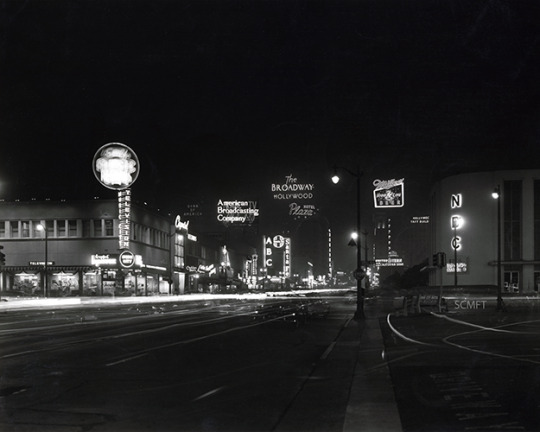
As Sunset crosses Cahuenga, several institutions – the Hollywood Athletic Club (6525, Beaux Arts), Blessed Sacrament Church (6657, Spanish Colonial Revival), Crossroads of the World (6671, Robert Derrah, Streamline Moderne), and the Hollywood Reporter (6715, Hollywood Regency) – are just a few examples of early 20th century styles that made Hollywood famous for its architectural and cultural diversity within the community.

Located at Sunset and Highland, Hollywood High School was founded in 1903; its lovely Streamline campus designed by architects Marsh, Smith, and Powell dates from 1935. One block west, the corner of Sunset and La Brea was once home to the famous Tiny Naylor’s Drive-In. Further west through the historic neighborhoods of Spaulding Square and Sunset Square (designated Historic Preservation Overlay Zones), are the Director’s Guild at 7920, the former locations of Schwab’s Pharmacy at 8024, and the Garden of Allah Hotel at 8150 (soon to be a new development designed by Frank Gehry). The Garden was headquarters for transplanted writers during their stays in Hollywood, including Robert Benchley, Dorothy Parker (of New York Algonquin Hotel fame), and novelist F. Scott Fitzgerald.

The Chateau Marmont at 8221 (1928, Arnold Weitzman, Norman Style), just west of Crescent Heights, is the gateway to the “Sunset Strip”, the most famous/infamous section of the boulevard. Located in the city of West Hollywood, this part of Sunset was, and still is, a major hub of Los Angeles nightlife, known for its trademark array of colorful billboards. The mile and a half stretch running from Harper Avenue passed Sunset Plaza to the boulevard’s western border with Beverly Hills, is densely populated with trendy boutiques, restaurants, nightclubs and venues that have been social gathering spots of the entertainment industry and its fans for over eight decades.

Historically outside of the Los Angeles city limits, in an unincorporated area of the county of Los Angeles, these blocks of Sunset were policed by the less vigilant Sheriff’s Department rather than the heavy hand of the LAPD, thus the area was perceived to be more permissive of public behavior. It was illegal to gamble in the city, but legal in the county. This fostered the building of a wilder concentration of nightlife than Los Angeles proper would tolerate in the 1920s. As a consequence, a number of nightclubs and casinos moved in along The Strip, attracting celebrities and other more liberal-minded locals, as the alcohol continued to flow in back rooms during Prohibition.
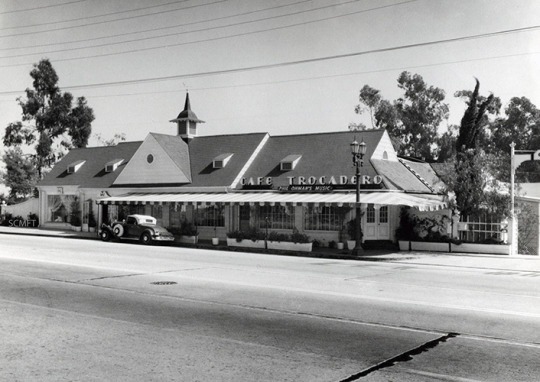
Glamour and glitz especially defined The Strip in the 1930s and 40s, as its renowned restaurants and nightclubs became playgrounds for the rich and famous. Movie legends, power brokers and everyone who was anyone danced at such legendary clubs as Ciro’s (8433), Mocambo (8588), and the Trocadero (8610). Some of its more expensive clubs and restaurants were said to be owned by gangsters like Mickey Cohen, earning the Strip a mention in Raymond Chandler’s Philip Marlowe novel The Little Sister. Most were owned by Hollywood insiders, such as Billy Wilkerson (publisher of the Hollywood Reporter) and director Preston Sturges. The publicity machine of the studios required their stars to be visible to the public, so gossip columnists like Hedda Hopper and Louella Parsons were also regularly in attendance to report on the events and star sightings at these high profile venues.
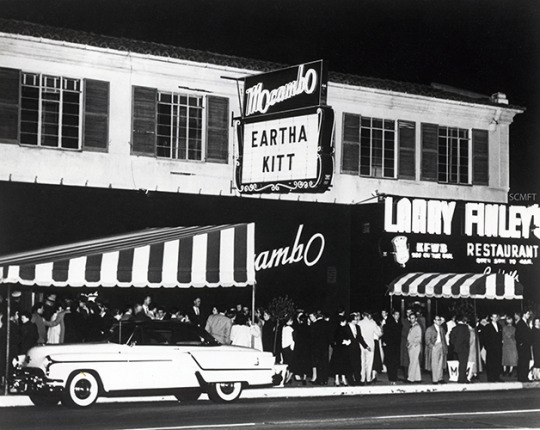
By the early 1960s, The Strip seemingly lost favor with movie people, but the restaurants, bars and clubs continued to attract out of town visitors and locals. In the mid-60s and 70s, the area became a major hang out for the counterculture and rock music scenes, as well as the epicenter of the Sunset Strip curfew riots in the summer of 1966, which inspired the Buffalo Springfield song For What It’s Worth. Go-Go dancers performed nightly at such hotspots as the Whisky-a-Go-Go (8901), while bands such as The Doors, The Byrds, Frank Zappa, Van Halen, Motley Crue, Guns ’n Roses, and Whitesnake all played at the Roxy (9009), Pandora’s Box, London Fog, Rainbow Bar & Grill (9015), and Viper Room (8852).

As The Strip became a haven for musical artists in the 1970s and 80s, the Continental Hyatt House (8358), also referred to as the Riot House (now Andaz), became a second home for touring rock bands such as Led Zeppelin, The Rolling Stones, and The Who. Consequently, the hotel became associated with notoriously debaucherous behavior for a time, many of its most outrageous legends later retold in Hollywood movies and TV shows. The Chateau Marmont (8221) and Sunset Tower (at 8358; Leland Bryant, 1931 Art Deco/Streamline Moderne), also share a long history of housing transplant artists during their stays in Hollywood, serving as film sets, and receiving mentions in literature, music, and pop culture.
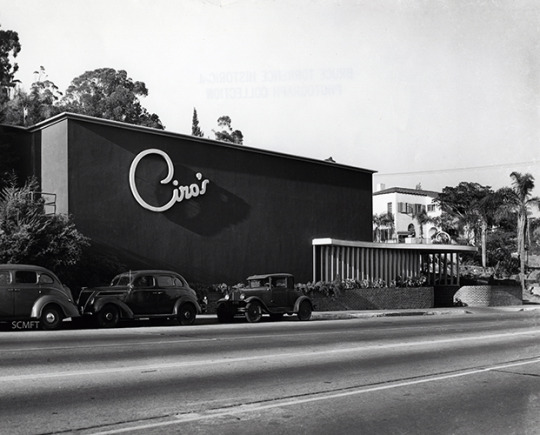
The Comedy Store (8433), the former site of Ciro’s, gave many comics like Jim Carrey, Sam Kinison, David Letterman, and Jay Leno their starts, while bonafide comedians like Richard Pryor, Whoopi Goldberg, Eddie Murphy, Jerry Seinfeld, and Robin Williams would often try out their new acts in front of crowds.

Tales of Sunset’s history and significance are as long as the boulevard itself. We could easily go on. From the early 1900s to present, Sunset Blvd has been one of Hollywood’s favorite destinations to create, work, play, and shop; the variety of buildings and legends clearly reflect that. Regardless of your actual location, you too can take a trip down Sunset Blvd via hollywoodphotographs.com right now! Please enjoy exploring all the galleries we’ve linked to in this post and be sure to stay tuned for even more in-depth stories of other magnificent Hollywood locations soon to follow.
~ Christy McAvoy and Carly Caryn, Historic Hollywood Photographs
#sunset blvd#hollywood#sunset strip#architecture#streetsofla#cityscape#streetscape#west hollywood#los angeles#history#nightlife#celebrities#historic hollywood photographs#hollywood photos
4 notes
·
View notes
Photo

Little Indira Milini Khan photographed at the bus stop with her mom Chaka Khan, in Los Angeles, California, around 1977 or 78.
The Capitol Records Building at 1750 Vine Street can be seen in the distance. The Capitol Records Building, also known as the Capitol Records Tower, is a Hollywood Boulevard Commercial and Entertainment District building that is located in Hollywood, Los Angeles. The building is a thirteen-story tower that was designed by Louis Naidorf (who was working at Welton Becket Associates at the time), and is one of the city's landmarks. Construction occurred soon after British company EMI acquired Capitol Records in 1955, and was completed in April 1956. Located just north of the Hollywood and Vine intersection, the Capitol Records Tower houses the consolidation of Capitol Records' West Coast operations and is also home to the recording studios and echo chambers of Capitol Studios. The building is a Los Angeles Historic-Cultural Monument.
Photo and caption via Carl Manley of Vintage African American Photography
120 notes
·
View notes
Photo

Office Building (1965) of “North Carolina Mutual Life Insurance Company” in Durham, NC, USA, by Welton Becket & Associates,
#1960s#office building#concrete#brutalism#brutalist#architecture#usa#architektur#sosbrutalism#welton becket
90 notes
·
View notes
Photo

President Gerald Fords former home in Rancho Mirage, California. Designed by: Welton Becket & Associates in 1977. Restoration by: Marmol Radziner Architecture.
0 notes
Photo

Welton Becket and Associates, Avco Financial Center, Newport Beach, California, 1971
#architecture#image#design#photography#color photography#Welton Becket and Associates#Newport Beach#Avco Financial Center#California#tower
196 notes
·
View notes
Photo
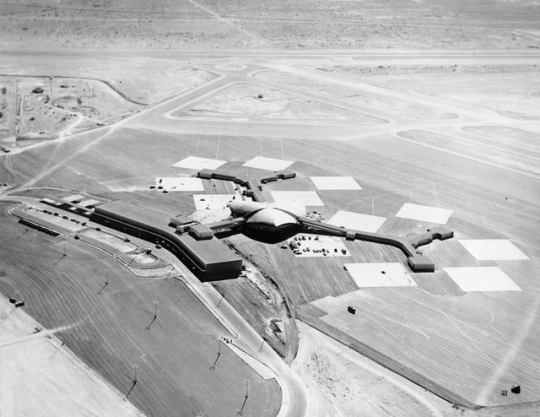

The Field Terminal at McCarran Airport, 1963
In the late 50s, McCarran Airport began planning an all-new passenger terminal, to replace its original location on Hwy 91. The new terminal opened March 15, 1963, and relocated the airport entryway to Paradise Rd. The architects were Welton Becket Associates of Los Angeles, and John Replogle of Las Vegas. The terminal was in development at the same time as the TWA Flight Center in New York City.
“Pierre Cabrol AIA at Welton Becket Associates was the designer” - Welton MacDonald Becket.
Photos (1) via LAS Airport, (2) by J. Florian Mitchell via Continuous Lean.
76 notes
·
View notes